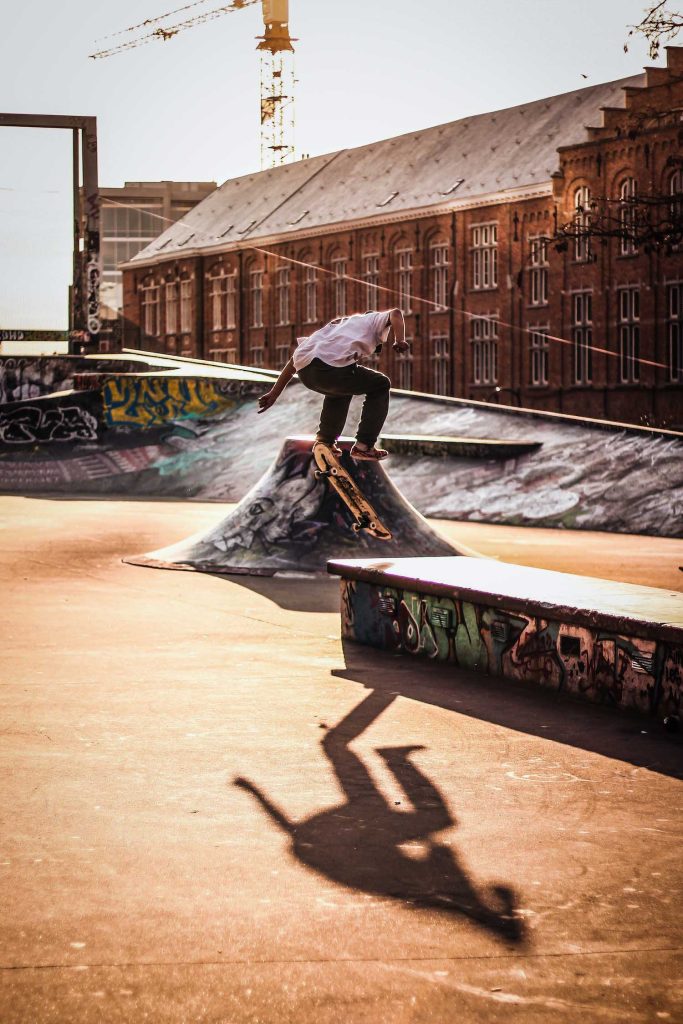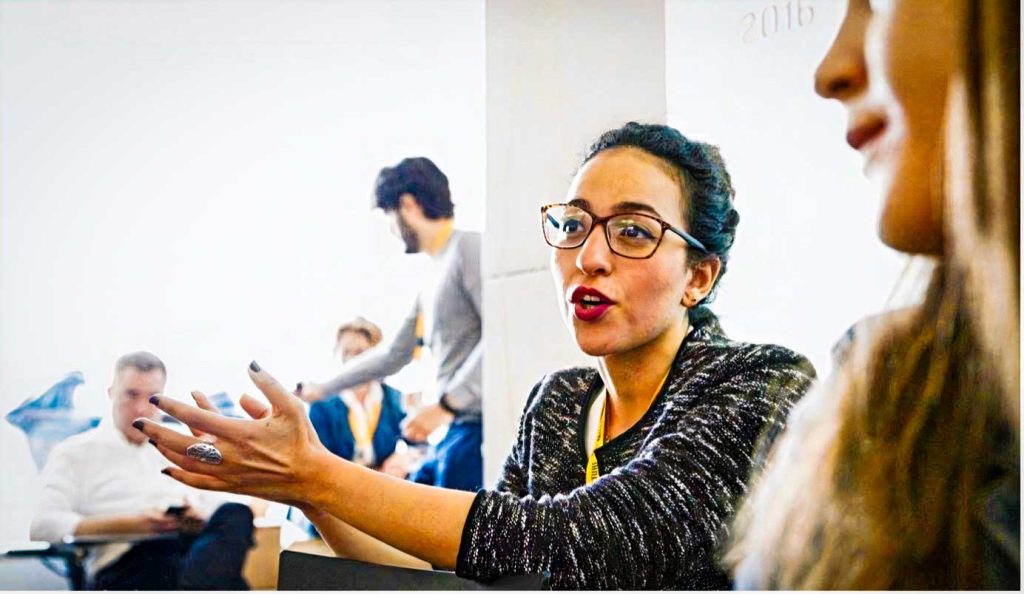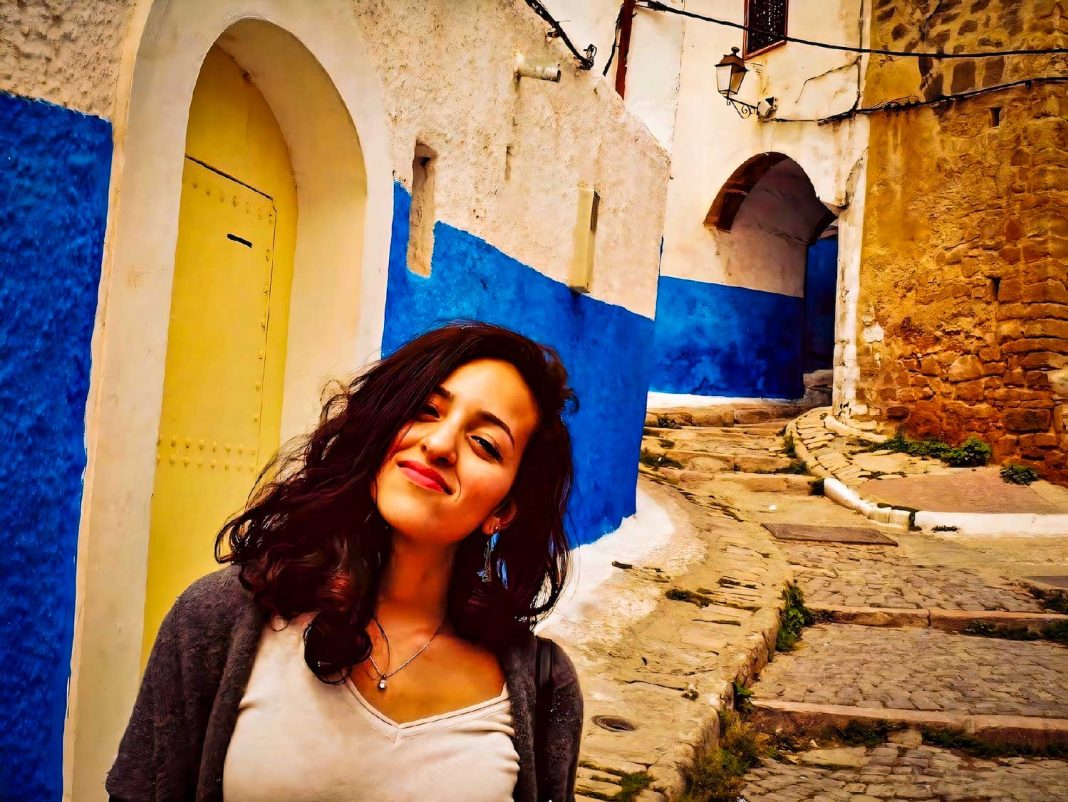Cities aren’t inclusive. It’s evident in how they’re laid out, the policies that govern us, and the mindsets of inhabitants. There’s a way to change this. Mainstreaming gender and intersectionality results in more inclusive, fairer, safer, and more prosperous cities. We ask a consultant in the field, Safaa Charafi, just how we can put this into practice.
There’s a blight on our cities that is hidden in plain view: the male perspective, and it dominates planning.
Roads, for example, are everywhere, and they are built to serve men, who are more likely than women to own cars and take direct trips. Or public toilets, which generally don’t meet women’s sanitation needs because planners don’t consider women’s perspectives in design.
These types of disparities run through our cities like coal through a rockface; out of sight until you dig deep and discover it’s a vein that runs right the way through.
Touching on every element of the city’s makeup, the engrained nature of male planning makes it difficult to overcome. That’s why we need people like Safaa Charafi.
The Significance of a Gender Consultant
Based in Brussels, Belgium, Safaa – a gender consultant – conducts research and analysis on how diversity impacts urban planning and development. This she does through her own consulting firm, Urban Inclusion, and as a fellow in the think tank Itinera Institute vzw.
Safaa is especially concerned with how a lack of representation disproportionately disadvantages women and marginalised communities.
“I’m really passionate about this work,” she tells us. “I believe that everyone should have equal access to safe and welcoming urban spaces, regardless of their economic status, migration status, race, gender, ability, etc.”
It’s a passion that stems from formative personal experiences. As a young girl in Casablanca, Safaa realised that gender shaped her experience of the world and, by extension, the city.
“I grew up in a very patriarchal society and I always felt that it was unfair that I wasn’t able to navigate the city like my brother would.”

This would be amplified as an adult and, as is the case for so many others, became more complex with each layer of identity: “When I came to Europe, I realised my ethnicity and migration status on top of my gender were now shaping how I was seen and how I could navigate the city.”
Safaa narrowly avoided becoming part of the problem herself – a danger we all face if we don’t question the accepted norms.
From Gentrification to Gender Equality
Given her love for art as a child, Safaa naturally ended up studying architecture.
After her first master’s degree, in Rabat, our CityChanger joined a large corporate investment institution. But just two years later, while working as a project manager on a real estate development in the northeast of Morocco, she woke up to how her profession was contributing to regional gentrification.
“I didn’t want to be part of that. I didn’t want to be part of something that was displacing communities and exacerbating inequality.”
So, Safaa changed tack and enrolled in the human-centred 4Cities master’s degree.
During this time, she lived in multiple places – Vienna, Copenhagen, Madrid, and Brussels – and saw some familiar problems and emerging solutions at work in regions such as the Balkans and Scandinavia.
Maybe a bigger influence still was Lefebvre’s concept of the right to the city. Resonating with Safaa’s personal challenges, this would shape her concept of inclusive urban planning.
But the problem for now, she adds, is that there’s still not a lot of it going on.
Diversity – The Planner’s Headache
As an example, public sports fields shed some light on the ‘invisible’ nature of the problems at hand.

The ubiquitous skate park seems to be every council’s idea of keeping young people occupied. We all pay to build and maintain them through taxes but, it turns out, these facilities are predominantly used by men and boys.
The gendered issues that prevent female participation – including body image, menstruation, and emotional health – are sorely overlooked.
Added to this, societal and cultural pressures are genuine factors: “Different societies have different gender-stereotypes. In Muslim countries, for example, sport or even being in the street for that matter is frowned upon for young girls – especially when they are going through puberty.”
Because (male!) planners don’t have these experiences, their homogenous hold over how urban spaces are formed “usually makes cities very unwelcoming or dangerous places for women”.
And not only women. “It’s safer to be a white abled middle-class woman in some neighbourhoods in the US than a disabled or trans black person,” Safaa explains.
Turning this around has the power to provide very practical benefits, even for the most maligned groups.
Equitable urban planning can make sure that everyone has access to quality affordable housing, public spaces, transportation, education, and other amenities.
Intersectionality & the City
Equipped with the drive, knowledge, and determination to shift the imbalance, Safaa began to specialise in gender mainstreaming and intersectionality.
She explains:
- Gender mainstreaming “is an approach that aims to integrate gender perspectives and analysis into policies, programmes, and practices”.
- Intersectionality is “the recognition that individuals have multiple and intersecting identities that can create unique experiences and needs in the city”.
These identities, which aside from gender include race, class, socio-economic status, sexuality, and ability, “overlap and intersect to create unique experiences of discrimination and privilege.” Our ‘makeup’ affects how we interact with and move around the city.
There can be a profound difference between the two ideas. Both in an urban analysis on behalf of UN Women for the Moroccan Ministry of Housing and her own research, Safaa found that many gender mainstreaming policies still fail to be intersectional.
City officials usually find intersectionality “too theoretical or too complex” to understand and incorporate.
The Impact of Intersectionality
Architects, urbanists, engineers, planners, and decision-makers just aren’t very diverse. They therefore don’t understand the challenges other communities encounter in cosmopolitan societies.
And, while there are no one-size-fits-all solutions, understanding multifaceted needs gifts us the keys to positive change. The root of this is participation.
Under Safaa’s guidance, cities bring “people from different backgrounds together, to discuss urban issues, and brainstorm solutions, based on their unique experiences and their needs”.
Representation alone is not enough. Our CityChanger helps her clients realise that it requires an intentional effort to address the power imbalance and implement processes that create inclusion.
She works with city administrations and international organisations to equip them with the right knowledge, identify how to be more inclusive and equitable, and support them to design and develop policies and programmes that fulfil diverse needs.
It’s really about genuinely creating a space for meaningful participation and decision-making power for those diverse voices.
What follows is Safaa’s expert advice for effectively facilitating opportunities for minorities and marginalised groups to participate in planning processes.

Engage Everyone
Aim for the most widespread and diverse representation possible, although accept that you’ll never get 100% of people involved.
Safaa stresses that we need to “recognise that women or introverted individuals may not feel comfortable speaking up in large groups”.
Host small groups and offer written or remote means of participation (online forums, mail-in options).
Alternatives for improving inclusivity and supporting differences among a community:
- Only use physical spaces accessible to people with mobility challenges.
- Provide translation services to accommodate different languages.
- Offer childcare options to enable families to participate.
- Vary meeting schedules to spread opportunities for all lifestyles, e.g. shift workers.
- Create and promote a safe and inclusive environment for LGBTQ+ individuals.
- Consider the needs of neurodivergent individuals, e.g. provide quiet spaces and sensory-friendly environments.
Citizens’ Assembly
Any form of community participation can be effective, but one approach that works well is a citizen’s assembly.
Participants selected at random, like a lottery, results in a mix of backgrounds: nationalities, native languages, ages, education types, socioeconomic statuses, etc.
By providing a space for discussions that involves mixed voices and the guidance of experts to provide data and explain complex issues, this group can brainstorm creative solutions. Sessions commonly culminating in a proposal that is submitted to the city council. In some cases, even parliament!
It’s not about the politicians, and it’s not about who’s at the top. I really believe it needs to be a bottom-up process whenever you want to change a neighbourhood or make a public space.
Why would they bother to participate? Aside from being empowered to make a difference in the community they live in and care about, they’re paid to do it. Incentivisation works wonders.
Take the Easy Option
Our CityChanger points out that simple and fairly inexpensive solutions can be effective and attractive to city leadership.
Little changes to established practices make a difference. Women report feeling much safer, for example, when we do away with gloomy dead-end streets and install better streetlighting to improve visibility. More female and gender-neutral toilets are a must!
Gender Budgeting
As a practical mechanism for mainstreaming intersectionality, gender budgeting is used to analyse government budgets to see how they underpin (in)equalities and formulate ways to better allocate spending to meet the needs of marginalised groups.
It’s not about creating separate pots of money for different sexes, but improving existing facilities to make them more accessible for everyone – even men.
Commit to Change… and Change Again
Planners have proven for decades that we don’t know what other people need, we hardly ever ask them, and even when we do, we rarely implement solutions based on our findings. That’s why cities fall short of serving our citizens.
The commitment to learn, change, and constantly review work practices can seem a big ask. Yes, it takes time and as you learn more, some aspects are likely to change again.
You need to be highly adaptable to ensure that diverse perspectives are genuinely integrated into the urban or the planning process.
That’s why it’s important to have the right leadership in place; individuals and teams who understand that a city built on an intersectional foundation has the chance to be better and commit to follow it through.
Change is a State of Mind
Although many of the problems intersectional policies target are hidden, their impacts are often clearly visible.
In Morocco, Safaa points out, more women are now represented in politics and other prominent positions. In a recent visit, she observed a noticeable decline in street-based sexual harassment. The female population lives freer than when she was a girl.
She also reiterates that change like this is the responsibility of us all.
“It’s not only about policies. There’s a whole mentality aspect. We can make laws that improve the quality of life, but if people are not willing to change, that’s not going to do much.”
Rather than wait for city administrations to get on board, or for gender consultants to lead the way, communities can already put Safaa’s ideas into practice with projects of their own.
Men especially, planners or not, should use their voice as role models for change: call for equality from city leadership and support grassroots initiatives that improve inclusion for diverse groups.
As for Safaa, she will continue to work to improve conditions for women and marginalised groups, and she exudes the spirit to achieve exactly that.
“For the future generation of girls, I want them to be able to claim the streets and claim the city as their own. That’s my biggest motivation,” she says, in a tone that radiates hope. “I want to see more of that. “


